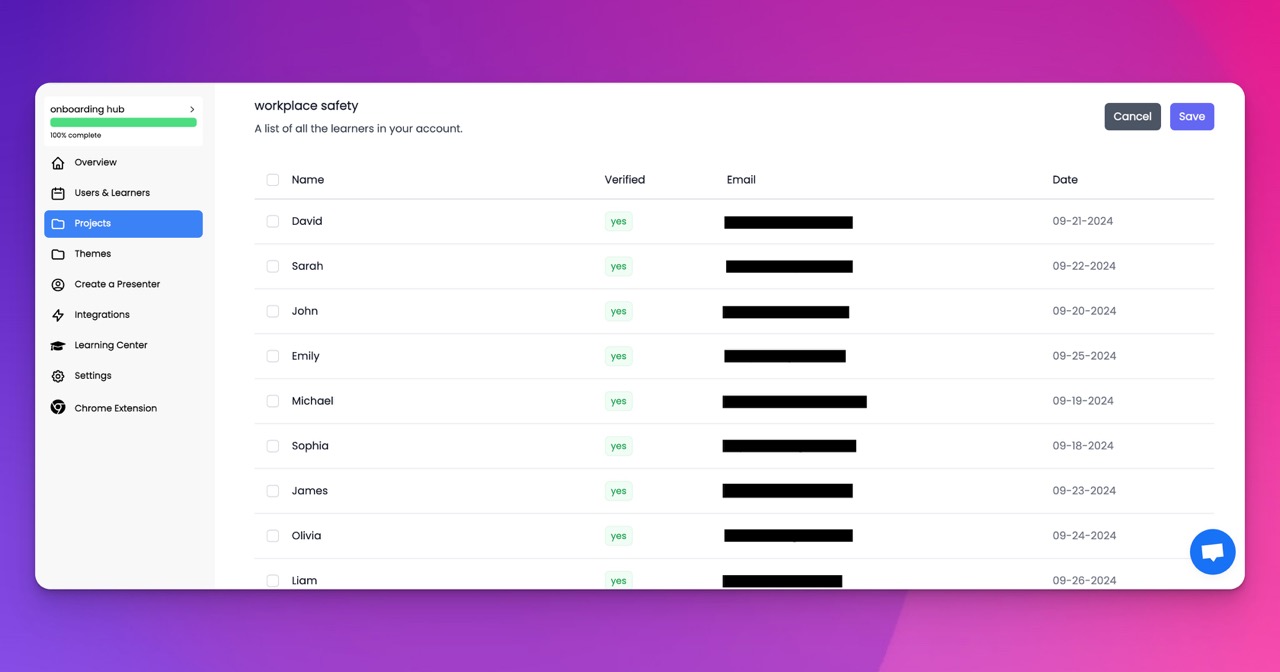🎉 Trainday now integrates with Zendesk and Hubspot 🎉 Trainday now integrates with Zendesk and Hubspot 🎉 Trainday now integrates with Zendesk and Hubspot
🎉 Trainday now integrates with Zendesk and Hubspot
Contact
Optometry
Employee Training for the Future of Work in Optometry
Revolutionizing Employee Training for the Future of Work in Optometry: Harnessing Data and Artificial Intelligence
The field of optometry is rapidly evolving, and with technological advancements, it is crucial for optometrists and their staff to continuously update their skills to meet the demands of the future. Employee training plays a vital role in ensuring that the workforce is equipped with the latest knowledge and expertise. In this blog post, we will explore how data and artificial intelligence (AI) can revolutionize employee training in optometry, enabling the creation of relevant courses in a fast and efficient manner.
1. The Need for Modernized Employee Training:
As the future of work in optometry is heavily influenced by technological advancements, traditional training methods may no longer suffice. Optometric practices must adapt to the changing landscape and embrace innovative approaches to train their employees effectively.
2. Leveraging Data for Training Courses:
Data is a powerful tool that can provide valuable insights into the specific areas where optometry employees need training. Analyzing data related to patient feedback, industry trends, and performance evaluations can help identify knowledge gaps and determine the most relevant topics for training.
3. Utilizing Artificial Intelligence (AI) in Training Development:
Artificial intelligence can significantly expedite the course creation process. AI algorithms can analyze vast amounts of data, identifying patterns and trends to develop personalized training modules. These modules can cater to individual employee needs, ensuring a targeted and efficient learning experience.
4. Adaptive Learning Platforms:
AI-powered adaptive learning platforms can personalize training experiences for optometry employees. These platforms provide customized content based on an employee's skill level, allowing them to progress at their own pace. By continually analyzing employee performance, these platforms can further refine the training program to maximize effectiveness.
5. Virtual and Augmented Reality Training:
Virtual and augmented reality (VR/AR) technologies offer immersive training experiences that simulate real-life scenarios. Optometry employees can practice diagnostic procedures, interact with virtual patients, and hone their skills in a risk-free environment. Integrating AI into VR/AR training can provide real-time feedback and guidance, enhancing the learning process.
6. Gamification and Microlearning:
Gamification techniques, such as leaderboards, badges, and rewards, can create a sense of competition and motivation among employees. Microlearning, on the other hand, breaks down training materials into bite-sized modules that are easily digestible and accessible anytime, anywhere. AI can help analyze employee progress and adapt the gamified microlearning content to cater to their individual needs.
7. Continuous Learning and Adaptability:
The future of work in optometry demands a workforce that is adaptable and continuously upskills. Data and AI can facilitate ongoing training programs that keep employees updated with the latest advancements in the field. Regular assessments and performance tracking can help identify areas that require improvement, ensuring a dynamic workforce ready to embrace the future.
Conclusion:
The future of work in optometry depends on the ability of optometrists and their staff to adapt and upskill continuously. Leveraging data and artificial intelligence in employee training can revolutionize the way optometry professionals learn, ensuring relevant and efficient training courses are developed in a fast-paced environment. By embracing these advancements, optometric practices can equip their workforce with the necessary skills to thrive in the changing landscape of optometry.
Accelerate Compliance.
Deliver OSHA-Ready Courses Instantly.
Empower your team with data-driven training solutions tailored to your industry's safety standards. Stay compliant, reduce risks, and boost productivity with AI-powered course creation.
